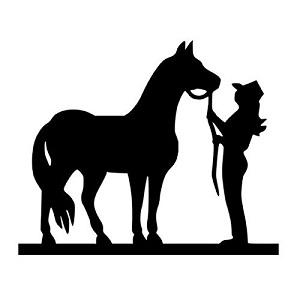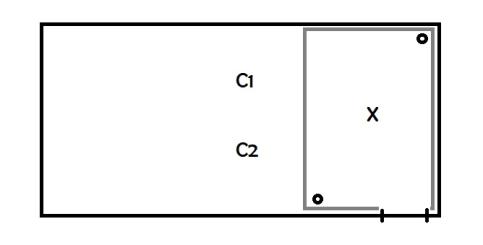Method

A total of 25 owners and 26 horses were recruited via different horse forums on the internet. One owner participated with two horses. The population of horses consisted of 14 mares and 12 geldings of different breeds and age, ranging from 4-28 years (Mean 13 ± 1 SE). All owners were females and the horses were kept in privately owned stables around Östergötland, Sweden. The testing episode was between mid-September and end of November 2018.
The aim of the experiment was to measure behaviour and heart rate of the horse during a separation from and reunion with its owner and a stranger, separately. The experiment was performed in an indoor riding arena which was divided off to a smaller experimental area (Figure 1).
The horses were equipped with an Equine Polar band with a heart rate sensor. The heart rate was monitored via a sports watch that was attached on the horse's halter.
The experiment was subdivided into four episodes where the first two episodes, called stand and walk, was performed to gain a heart rate baseline of the horse for the two different locomotion levels of standing still and walking. The last two episodes were the separation and reunion episode.
After the experiment had been completed the owner was asked to reply to a questionnaire regarding which training style she used. The answers from the questionnaire was analysed and used to classify the owners into three different groups: mainly using negative reinforcement, mixing positive and negative reinforcement or mainly using positive reinforcement. The owner also compleated a questionnaire regarding adult attachment style that classified owners into secure attachment, ambivalent or distanced. None of the owners got an anxious attachment style.

Responsible for this page:
Director of undergraduate studies Biology
Last updated:
06/26/19
